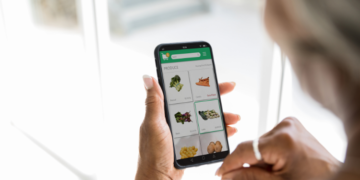
Near field communication or NFC is a rising technology that is based on famous RFID technology. This technology was introduced in smartphones in 2002 and it has been evolving ever since. Today’s fast-paced technology-ridden world is now using NFC technology for various business purposes. This technology benefits the business organization by helping them comply with their regulatory requirements like KYC and AML through smooth digital ID verification. Through this blog, let’s dig into the significance of NFC technology and how it revamps the verification of digital ID.
What is NFC?
NFC is a wireless technology that has enabled individuals to perform contactless transactions. Since the modern world is moving towards contactless information sharing and touchless payments, NFC is the perfect technology that can be compatible. Through NFC technology a simple scan is performed through the simple tap from the NFC supported device to make the transactions.
The initial technology, RFID, on which NFC is based first came into existence during World War Two. After that, the tech warriors worked day and night to enhance the technology and back in 2002, NFC was developed. Now in 2021, smartphones integrating NFC technology have spiked and now almost all smartphone users are using the NFC technology. Research suggests that the NFC is still evolving and its applications are increasing. Other than the digital payments and transfer of data, NFC is gaining popularity in the identity verification sector and is helping many sectors to make their IDV procedures more seamless.
Let’s look in detail how the process of NFC works
How Does the NFC Identity Verification Works?
So basically, NFC is a small chip that is placed on the new digital identity documents issued by the government. These identity documents include ID cards, debit card, passports, driver’s licence etc. The chip contains the information for security purpose as it is next to impossible to manipulate the data stored on the chip. The data on the chip is fetched through the NFC reader when required.
This concept of the NFC is somewhat similar to the concept of wifi as it also uses radio waves in order to transfer information. Instead of using the wires and cords, it works by bringing the electronic device closer to the chip.
What makes NFC more useful in the identity verification market is that it can scan the data on the chip embedded in the NFC-based ID documents or passport. Through this reader, the document tampering was detected. The customer just has to tap their ID card against their NFC-enabled device and the data on their ID card will be fetched for the further verification process.
What are the Common Use Cases of NFC?
Other than the identity verification sector, there are limitless use cases of NFC. Let us discuss a few in detail.
- Commuting
NFC is now involved in all types of public transportation. It allows payment cards just through the tap of the NFC-enable device against the payment portals and the transaction information will be fetched through it. Paying for a parking ticket has become easier with NFC technology as it can be done through a single tap of the phone.
- Advertisement
NFC technology is now embedded in billboards and posters. Through NFC tap, the person can access the coupons or tickets or even get information about the product advertised. NFC has opened new doors for the advertisement industry.
- Gaming
Now the gaming industry is streamlining its process through the use of NFC technology. The characters in the game can be waved over consoles through NFC and the players can check-in through it.
- Payment
Most people are familiar with the payment methods. NFC. Gone are the days of swiping a credit card or just paying through cash. The payment has become a task that is only a tap away. Every industry is using the NFC method to fetch the payment information.
- Social life
Through NFC technology, social life has become technology-ridden as well. Have to pay a friend? Do that with your NFC-enabled smartphones by just tapping. Even concert tickets can be bought through NFC while entering the premises just tap your device at the ticket counter and you are good to go. Information between can be shared by just bumping the NFC-enabled smartphones together.
























































